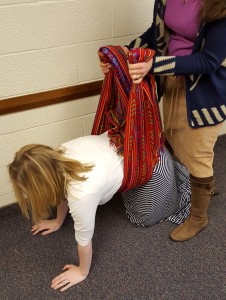Cesareans are a dime a dozen these days. Some are necessary, life-saving, even just sanity-saving, the best choice in a clinically murky situation. Many are unnecessary, the result of hurried doctors, unkind staff, tired mothers, and an avalanche of interventions ‘strongly recommended.’ There are also cesareans that happen because of clinical ineptitude.
Today I’d like to talk about these cesareans that happen because a care provider does not know what to do, does not have the skills or does not recognize the problem. Specifically, we’ll address failure to progress or labor arrest.
About a third of cesareans are for failure to progress.
Sometimes labor stalls. The contractions peter out, or the contraction pattern is putzy and odd. I tell couples in my birth classes that if this happens to them there are two main things to look at: the oxytocin situation of the woman (including how relaxed she is) and the position of the baby.
When labor stops or slows considerably, doctors have few courses of action. In fact the only thing I’ve ever heard of happening in the hospital is administration of Pitocin (fake oxytocin that doesn’t work the same way as your natural stuff). If a woman’s contractions aren’t doing it, doctors will pump her with fake hormones to make them stronger and longer. Sometimes, especially if the problem was lack of oxytocin, this works. If the problem is fetal position, this does little except prolong and intensify a dysfunctional labor.
Can’t doctors help you fix the position of the baby? Actually there are very, very few of them who know how. Midwives are more likely to have this skill, but it’s still rare. Some doulas have training.
So what helps? Intimate knowledge of inner female anatomy and fetal positioning and rotations. Then, some positioning exercises and other skills that move babies. This is the goal of Spinning Babies.
What is Spinning Babies?
Sometimes a posterior baby’s forehead sits over the pubic bone and needs to be dislodged.
Sometimes the baby needs to rotate a bit to fit through the buttonhole of the pelvic floor.
Sometimes the baby’s head isn’t tucked or her hands aren’t in her lap.
Sometimes the baby isn’t heading head first into the pelvis (breech, transverse).
Very often these problems can be resolved by positioning the mother or stretching the mother.
The muscles in the pelvis can be out of balance, making it harder for the baby to get through. We need to loosen what’s tight, support what’s loose, and untwist.
Knowledge of fetal position and maternal anatomy, optimal fetal positioning, and techniques learned from spinning babies will relieve these issues.
How can a woman know if she is unbalanced?
If you have soreness…
If you can’t lay down comfortably…
If you can’t walk comfortably…
If you have pelvic pain…
…there is probably fetal malposition.
What Helps Get Baby in the Right Position?
Inversions
Side-lying release
Rebozo sifting
Standing Sacral Release
Pelvic Tilts
Put one knee on a chair and rock side to side (this helps acyncliticism–baby’s head is tilted to the side)
See more about all these on the Spinning Babies website.
Inversions
Going upside down can help the baby get into the right position.
Gail Tully (the founder of Spinning Babies) tells a story about Dr. Carol Phillips who was at a home birth on the 3rd story of a no-elevator apartment. The baby wasn’t coming and they were going to the hospital. The EMTs put the mom on a stretcher and carried her down the stairs head first. The baby was born at the bottom of the stairs.
The ligaments in the back of the uterus and the utero-sacral ligament are adjusted by the stretch receptors activated by the inversion. This makes room for baby. It doesn’t manipulate the baby, it makes room.
The baby laboring on the third floor was able to maneuver out because it was inverted through mom’s trip down the stairs on the stretcher.
If you have a transverse baby, try doing 5 inversions in a 24 hr period for 30 seconds each. Gail reports a lot of success with that.

Do babies really get stuck?
Gail estimates that a “stuck baby” is actually stuck about 5% of the time. Most of the time it’s that there is no one at the birth who knows how to help rotate the baby. Or the woman is immobile and can’t move around to help make room for her baby to descend. Our bodies were not designed to birth with the body mechanics of modern hospital birth.
Women have arrested labors all the time. There can be many reasons for this, but every day doctors and midwives are caring for babies that get stuck. They often end in cesarean but they don’t have to.
Positioning and stretching help in 95% of cases. If only more doctors, midwives and pregnant couples knew these maneuvers, because most of the time it’s a simple solution that nobody knows.
Instead of failure to progress, Gail says, these labors should be called “failure to assist.”
You can learn posture and rest position tips for pregnancy and some tricks to use in labor. Spinning Babies can help.






